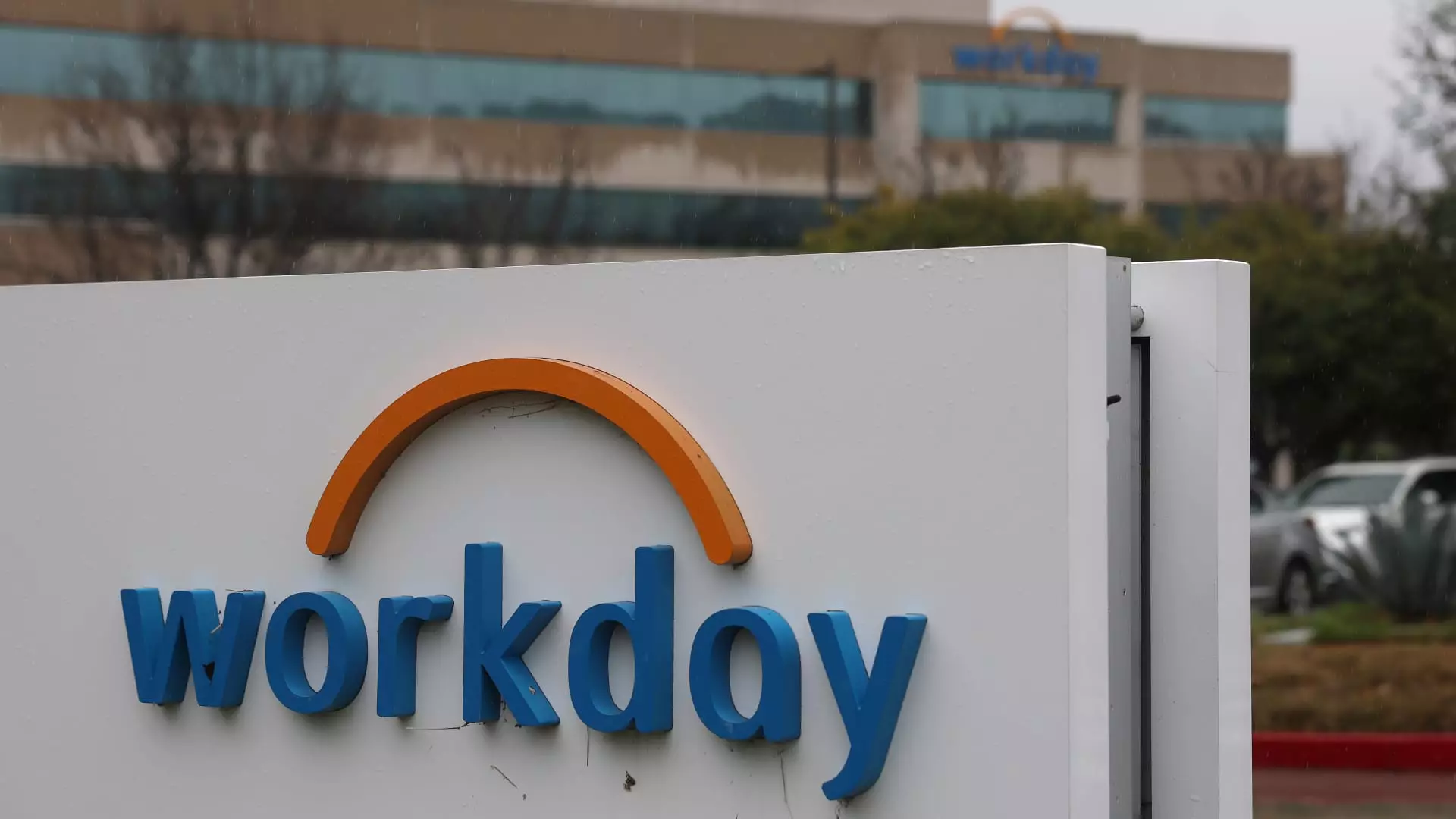Workday has long been heralded as a titan in the realm of enterprise cloud solutions, especially within human capital management and financial software. Its expansive client base, which includes over 60% of Fortune 500 companies, lends credibility to its dominant position. Yet, beneath this veneer of success lies a troubling reality: the company’s growth trajectory, once meteoric, is now facing significant headwinds. The relentless pursuit of expansion—fuelled by a “growth at all costs” mentality—has masked deeper issues, including sluggish profitability and declining relative performance compared to industry peers. Its story, while inspiring on the surface, is riddled with warning signs that suggest the era of unchallenged growth might be nearing its end.
Workday’s technological innovation and customer stickiness are undeniable. A 98% retention rate signifies loyalty, and the steady mid-teens revenue growth reveals a resilient business. However, these metrics mask the fundamental flaw: a growing difficulty in translating ongoing sales into meaningful profits. Despite impressive revenue figures, the company has yet to demonstrate a consistent ability to generate substantial profits. This disconnect raises pressing questions about the sustainability of its business model—particularly as it matures and its market becomes saturated.
Fundamental Challenges: From Hypergrowth to Maturity
The company’s rapid ascent from pre-IPO revenues of less than $300 million to nearly $9 billion today was driven by aggressive expansion efforts, innovation, and an unwavering focus on capturing market share. This “growth at all costs” approach was understandable in a startup phase, where market dominance often hinges on scale before profitability. Yet, as Workday now grapples with the law of large numbers, the same strategy becomes a liability.
Investors’ patience is waning, especially given Workday’s underperformance relative to peers like ServiceNow, SAP, and Salesforce. Over the past one, three, and five years, Workday has lagged its competitors by margins exceeding 13, 69, and 50 percentage points respectively. This divergence highlights an industry in flux, where the metrics that once propelled Workday’s valuation are no longer sufficient.
Moreover, with a market cap of approximately $58 billion, Workday’s valuation seems increasingly disconnected from its current cash flow realities. The company’s failure to translate revenue growth into profitability signals an underlying inefficiency. The focus on growth has often come at the expense of margins, leaving shareholders questioning whether the company’s valuation is justified or if it’s simply riding a wave of hype—an illusion of invincibility that risks crashing as growth stalls.
Leadership Change: A Necessary Pivot or Mere Cosmetic Shift?
The appointment of Carl Eschenbach as CEO marks a pivotal inflection point. For years, Aneel Bhusri, a visionary and founder, steered the ship amid turbulent waters of rapid expansion. His departure from day-to-day management, however, signals recognition that the next phase requires operational discipline and strategic focus—a skill set often missing in founders. Eschenbach’s entrée, supported by activist investor Elliott, hints at a strategic reset: from relentless growth to sustainable profitability and shareholder value.
This leadership transition is more than symbolic. It suggests a company willing to embrace discipline and perhaps acknowledge that innovation alone cannot sustain long-term viability. Eschenbach’s prior experience at VMware and his rapport with Elliott signal a possible shift toward a more pragmatic, profit-oriented corporate ethos. Critics, however, might argue this change risks stifling the innovative spirit that made Workday a market leader. Yet, without a concerted effort to refine operations, the company risks further underachievement and erosion of investor confidence.
Strategic Initiatives: The Promise of a New Direction
Workday’s recent multiyear plan signals the dawn of a new era—one driven by shareholder-friendly initiatives and strategic agility. Notably, the company announced a $5 billion share repurchase program and aimed for a free cash flow of $15 per share by 2028. These measures, aimed at improving shareholder value, contrast sharply with the previous focus solely on top-line growth.
The infusion of AI technology represents a critical lever. With a 200% increase in AI-based revenue in 2024, Workday has recognized that automation and intelligent workflows can both enhance its offerings and drive efficiencies. The acquisitions of Sana, Paradox, and Flowise form part of a broader AI and automation strategy, positioning the company to capitalize on the increasingly digital and automated nature of human resources and financial management.
However, such efforts are not without risks. The integration of acquisitions and the execution of AI-driven initiatives require significant operational discipline and strategic vision—areas where execution has historically been inconsistent. While the company’s ample cash reserves provide a buffer, the challenge lies in transforming these strategic ambitions into tangible, profitable realities.
Governance and Stakeholder Dynamics: A Balancing Act
Workday’s founder-controlled structure, with Bhusri retaining over 70% voting power, has traditionally shielded the company from external pressures, but it has also fostered a perception of governance risk among investors. Recognition by activist investors like Elliott, which now holds a sizable stake, could usher in a more balanced governance dynamic—one that aligns management’s interests with those of shareholders.
Elliott’s support for Eschenbach and the revamped strategic plan might represent a turning point, ensuring that operational discipline and accountability are prioritized. Yet, it remains to be seen whether these tactical shifts can truly break the cycle of underperformance. If the company’s leadership fails to reconcile its innovative prowess with prudent financial management, the illusion of invincibility could give way to stark reality.
In sum, Workday’s path forward hinges on its ability to pivot from rapid growth to sustainable maturity. Despite its longstanding dominance and innovative potential, it must confront its own limitations and redefine what success looks like in the next decade. If it does not, the bubble of optimism that has surrounded the company risks bursting, leaving investors to grapple with a more sobering truth: that size and innovation alone do not guarantee resilience in a tumultuous and increasingly competitive landscape.

